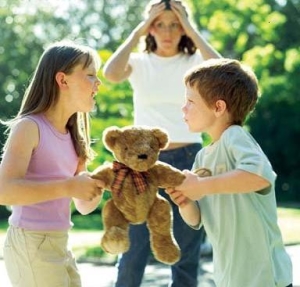 Children’s increased vulnerability to illness may be explained by a key difference in immune cells.
Children’s increased vulnerability to illness may be explained by a key difference in immune cells.
In a recent study, it was discovered that young mice’s immune systems secrete lower levels of the cytokine than in older mice, which is essential for the CD4 T-cell survival during infection.
It is a well-known fact that schools are popular breeding grounds for bacteria and viruses, but this cannot be connected with hygiene.
New research using mice shows that because young mice do not have immune systems as efficient as their adult counterparts, the younger ones may be prone to contact a viral infection, and take more time to clear from it.
Mice are often used to study mammals’ biology. Other similar mice studies investigated cancer development or the effect of fasting on longevity. Another example of such research explored the effects of garcinia cambogia extract on adipose cells and how this natural compound influences energy consumption and fat accumulation in cells.
In general, children are more susceptible to environmental risks than adults because of a number of reasons. First, kids are constantly growing and they eat more food, drink more water, and breathe more air than adults do. This is in proportion to their weight.
Also, their central nervous, reproductive, digestive, and immune systems are still in development stage. At some points of their development, contact to environmental toxics can cause permanent damage.
Kids act differently from adults and have diverse patterns of exposure. Little kids crawl on the ground and are greatly exposed to chemicals and dust that accumulate in soils and floors. Children cannot fully control their environment. They are usually oblivious of the risks and incapable of making good choices to shield their health.
The health problems that children have as a result from contact with poor sanitation, contaminated water, indoor smoke, and widespread disease vectors like unsafe waste and chemical disposals, insufficient food supply, and mosquitoes.
Significant improvement in minimizing environmental burden of disease on a worldwide scale can only be accomplished through focusing on the major risk factors, through an integrated approach. A wide-ranging comparative risk assessment advocates a cluster of 8 environmental problems, many of which may correspond in the places where children settle, learn and play.
In addition, children can also be affected by other environmental threats like air pollution, inadequate sanitation, and insufficient water, electronic waste, chemical hazards, injuries, radiation and emerging issues. Global environmental change, endocrine disrupting chemical and early life opportunities are also risks that put children in harm’s way.
In particular, the above study analyzed how CD4 T-cells respond to influenza. These cells play a very important role in the immune system, specifically in the adaptive immune system. They help the other immune cells’ activity by releasing T cell cytokines. This type of cells helps regulate or curb immune responses. CD4 T-cells are important in the activation and growth cytotoxic T cells, as well as in optimizing the bactericidal activity of phagocytes like macrophages.
This study revealed that the immune systems of children may yet ready to produce enough amounts of antibody molecules clear their lungs of influenza virus rapidly as adults. These findings were published in the Journal of Leukocyte Biology’s July 2016 issue.
Influenza is a type of viral infection that your nose, lungs and throat. Commonly, it is called the flu, but this is not the same with stomach flu viruses that can cause vomiting and diarrhea. The flu is actually more dangerous that the common colds for kids. Every year, thousands of kids get sick with seasonal influenza. In some cases, the illness results in death.
Severe influenza complications are very common in kids under 2 years old. Annually, about 20,000 children below the age of 5 are brought to hospitals because of influenza complications. The flu seasons differ in severity, but, a number of kids die from the flu every single year. In last year’s influenza season, over 130 flu-related pediatric fatalities were reported.
Generally, influenza is easy to treat, but sometimes, its complication can be fatal. Most patients who have flu have mild illness and do not need antiviral drug or other medical care. They can recover in just a week or two.
People who are at high risk of developing this viral infection include young kids under 5, adults over 65, pregnant women, individuals who have weak immune systems, and people who are very obese. Also, residents of nursing homes and those who are suffering from chronic illnesses like heart disease, diabetes, asthma, and kidney disease are prone to having the flu. According to experts, annual vaccination is the best defense against the flu.
Dr. David E. Verhoeven hopes that by comprehending the major differences in the immune responses of young kids. Dr. Verhoeven, a researcher from the College of Veterinary Medicine at Iowa State University in Ames, Iowa believes that they may be capable of developing greater ways to boost their immunity to the common pathogens that have the effects on their population. More importantly, the facts may be the factor that health experts may think about new designs of existing vaccines since both the immune systems of kids and adults may respond to them in various ways.
To establish this breakthrough, a team of scientists incorporated 2 groups of mice to replicate the effects of the flu infection in young kids and adults. Group 1 was 21 days old, while the other group was 8 to 10 weeks old. The two groups were infected with flu virus, strain H1N1.
The researchers then analyzed their immune responses to the flu. They discovered that CD4 T-cells in young mice secreted a major antiviral cytokine. It is called interferon gamma, and it is secreted at considerably lower levels than adult CD4 T-cells. The lower levels of interferon gamma cause higher rates of CD4 T-cell death throughout an infection. The young mice were incapable of having a strong enough immune response to eradicate the virus from the lungs until very late because CD4 T-cells are part of the antibody production.
The Deputy Editor of the Journal of Leukocyte Biology, Dr. John Wherry, warns that anyone with young kids must be aware that they are bringing home all different types of germs and infections.
The new data that they have collected are highly valuable because they begin to mark at fundamental immune mechanisms that control differently at young ages that might let setbacks in viral clearance, which could decipher to longer capacity to pass on such infections to new hosts.
 If you are considering living in an area in Chicago and you have a pet, then there are a few things that you should consider before moving in to a new localion.
If you are considering living in an area in Chicago and you have a pet, then there are a few things that you should consider before moving in to a new localion.
 Children’s increased vulnerability to illness may be explained by a key difference in immune cells.
Children’s increased vulnerability to illness may be explained by a key difference in immune cells.  Instilling regulation among kids is the most challenging task for parents. It is natural among kids that they will be restless and will force you to keep all their demands and needs.
Instilling regulation among kids is the most challenging task for parents. It is natural among kids that they will be restless and will force you to keep all their demands and needs. Remember that hopeful young boy saying he wanted seven sons and seven daughters when he grew up? Or that family that had five girls and was longing for a baby boy? Their hopes don’t have to be in vain! They may or may not realize that they do have other options. In the past couple years, planning parenthood has become a step easier. If and when to have children has “safely” been up to parents for about sixty years now, but what to have (as a “safe” idea) has only been around for a couple of years.
Remember that hopeful young boy saying he wanted seven sons and seven daughters when he grew up? Or that family that had five girls and was longing for a baby boy? Their hopes don’t have to be in vain! They may or may not realize that they do have other options. In the past couple years, planning parenthood has become a step easier. If and when to have children has “safely” been up to parents for about sixty years now, but what to have (as a “safe” idea) has only been around for a couple of years. Science, technology, engineering and math (STEM) careers are fun, creative, innovative…and pay pretty well too. How do we get that message to pre-college students so they consider careers in STEM? How do we excite students, girls in particular, to explore how they can change the world and make it a better place through a STEM career? Through messaging, engaging experiences, role models and education, we can make a difference.
Science, technology, engineering and math (STEM) careers are fun, creative, innovative…and pay pretty well too. How do we get that message to pre-college students so they consider careers in STEM? How do we excite students, girls in particular, to explore how they can change the world and make it a better place through a STEM career? Through messaging, engaging experiences, role models and education, we can make a difference.